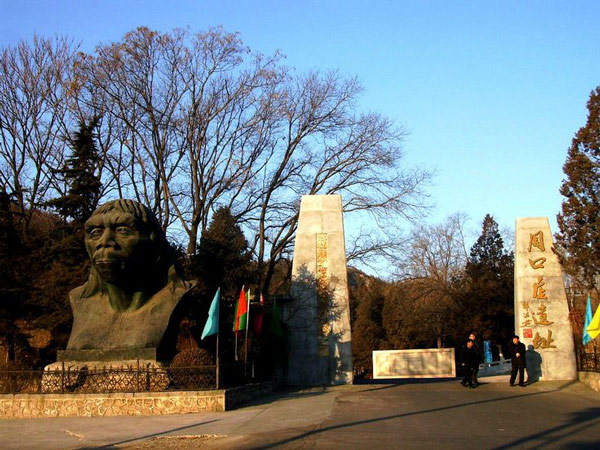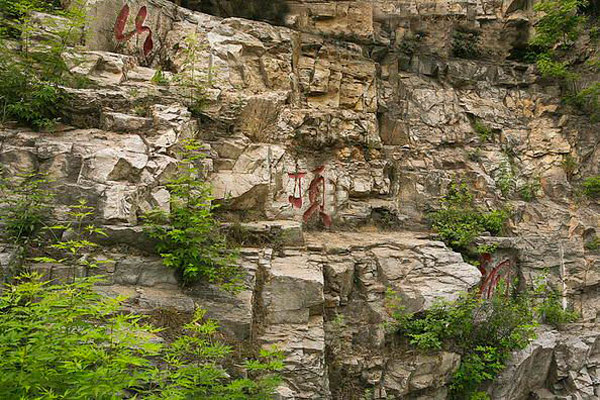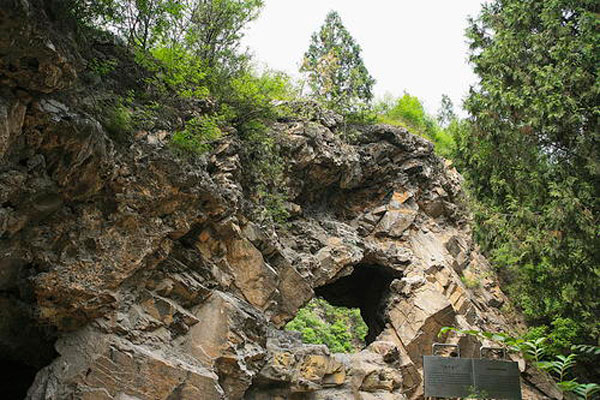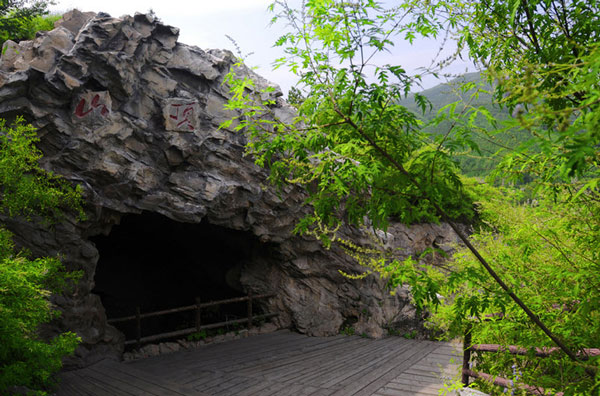'Beijing gibbon' in Zhoukou Du - China
Unesco's Scientific, Educational and Cultural Organization has recognized the "Beijing Gibbon" Relic in Zhoukou Du of China as a World Cultural Heritage in 1987.
Ruins of 'Peking Gibbons' in Zhoukou Du - World cultural heritage in China
The ' Peking Gibbon ' site is located on Long Xin Mountain in Zhoukou Village, Fangshan District, 48 Km southwest of Beijing City. It belongs to the area between the mountains and plains, the southeast is the big plain of the North China, the northwest is the mountains. Most of the mountains near Zhoukou County are limestone mountains, under the influence of hydraulics, forming many small and large natural caves . On the mountain there is a natural cave about 140 meters long, often called ' the gibbon cave' . In 1929, for the first time in this cave, there was a relic of ancient humans, later known as the " number one place of Chu Khau Du".

The Zhoukou Rui site is an important old Stone Age site in northern China, the most famous of which is the Peking Gibbon site. This site was discovered by Swedish scientists in 1921, after which many famous scientists excavated it. In 1927 the Canadian scientist conducted an official excavation at the Zhoukou Si site, and during this excavation, three human teeth were discovered and exactly that of the ancient ape. In 1929 Chinese archaeologist Bui Van Trung unearthed the ' first human skull' of the 'Peking Man' , which shocked the world.



The relic area of Chu Khau Point on Long Cot mountain
Zhoukou Ruai site underwent many surveys and excavations over 80 years, until today, scientific surveys are still underway. The number one site excavated more than 40 meters, but has yet to unearth half of the pile's heap. The fossil gibbons, stone utensils, the types of mammal fossils are numerous and rich in fire use, there are no relics of the same period.


The artifacts and wax figures displayed in the museum at the Chukou Di Yu Heritage Site
The discovery of a fire-using relic at Chu Khau Si's first excavation site, proved that humans knew how to use fire hundreds of thousands of years earlier than previously discovered. In the site, five layers of ashes were discovered, three places had ash and many bones were burned, the ash floor was six meters thick. These relics have proved that the gibbons of Peking not only know how to use fire, but also to store fire.
In the site, tens of thousands of stone tools were excavated , materials for making them were taken from around the site, the size of most of the stones here is small, their shape and type Many of the early stone items were rudimentary, the ones used to chop down were often placed in an important position. By the middle period, the stones became smaller, the stones used to make knives, making the sword grow very fast. By the end of the period, the stone became more and more compact, the stone puncher was the special stone of that period.



Pictures and images of Peking people are displayed at the Museum
Stone objects unearthed at the site show that, during the period about seven hundred thousand to two hundred thousand years ago, Peking Gibbons lived in Zhoukou Dii, they mainly lived on fruit picking, hunting but only side. In the early period, about 700 to 400 thousand years ago, the middle period was 400 to 300 thousand years ago, the last period was 300 to 200 thousand years ago. The gibbon of Beijing is a primitive human from the ancient gibbon to the wise, this discovery has played a very important role for biology, history and the study of the history of human development.
The discovery of Peking Gibbons and the culture of this region solved the scientific debate about 'straight-up ' people who are gibbons during the half-century since the 19th century when the Zhao Past discovered. The truth has proved, in the dawn of human history, aspects from physical form, cultural nature to social organization, v . it is true that there was a period of "people" standing upright ' , they are the next generation of ' Nam Nua ', and also the ancestors of the wise man of the future . The 'upright person ' is at an important intermediary stage in the sequence of evolution from gibbons to humans. So far, the typical stance of ' upright person' is still the gibbon of Beijing Chukou Yi standard, the Zhoukou Du remains a relic of the richest mankind, the system Most and most valuable compared to other sites in the world.

The Peking Zhuge Ruins site is included in the ' World Heritage List' in December 1987. The World Heritage Committee evaluates the importance of this Site: ' Scientific survey work only 'Beijing People' Zhoukou is still in the process of proceeding. Until now, scientists have discovered relics of Peking people of Chinese gibbons, they lived in the mid-innovation period, and also discovered all kinds of living utensils, including relics. The new era of humanity ranges from 18,000 to 11,000 BC. The Zhoukou Du site is not only a rare historical evidence of human society in the Asian interior of ancient times, but also shows the evolution of humanity. '
- China discovered skull fossils almost completely
- 33 Chinese projects are changing the face of the world (Part 2)
- Beijing issued a red alert for the second time because of air pollution
- Beijing atmosphere at dangerous pollution levels
- After 30 years, Beijing picked up snow again in April
- Rare images return to Beijing more than 100 years ago
- Motherhood between dogs and gibbons
- Beijing before and after being engulfed in smog pollution
- Beijing spent $ 16 billion to brighten the sky
- Found new gibbons in the tomb of Ms. Qin Shihuang
- China raises the alarm level of snow storm risk
- Air pollution in Beijing reached a record
 Suzhou classic bonsai garden - China
Suzhou classic bonsai garden - China Chau Nguyen Dynasty
Chau Nguyen Dynasty Thai Son Mountain - World Wonder
Thai Son Mountain - World Wonder Ancient villages of Shirakawa-go and Gokayama
Ancient villages of Shirakawa-go and Gokayama